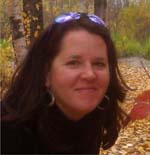Community Corner

By LISA MATLOCK
Outreach Coordinator
Since coming on board last year, I have been regularly asked by community members, board members, and even staff: What does youth engagement have to do with “environmentally safe operation of the Alyeska terminal and associated tankers”? This question arises because the council has invested in youth projects focusing on marine stewardship throughout our region. It’s a good question, one which is vital for the future of oil spill prevention and response in our region.
Like it or not, those who remember the Exxon Valdez oil spill firsthand are aging. For many of us 25 years may seem like yesterday, but for the children of the 21st century that sounds like ancient history. Those who responded to the spill, whose lives were forever changed by the spill, are passionate about the work we do for personal reasons. If those of us with that passion do not invest in passing the importance of oil spill prevention and better oil spill response onto the next generation, then we are likely fated to a future involving the sorts of complacencies that contributed to the Exxon Valdez oil spill in the first place.
We need vigilant future stewards for our region, and the council is helping develop them through our youth projects.
The Youth Involvement project, an initiative of the council’s Information and Education Committee, began three years ago. Through it, we work with partners who deliver marine stewardship education directly to students of all ages and teachers. Our partners take existing ocean-focused curriculum and hands-on activities and pull in oil spill science and oil spill history into those programs. Oil spill prevention and response activities provide a fresh perspective into existing marine education. These programs also help further our goals of increasing public awareness of the spill prevention and response system in Prince William Sound and the potential environmental impacts of the terminal and tanker operations. These activities also help give general marine stewardship education a lesson in reality.
Our newest youth project is a pilot internship program. Through this project, high school and college-level students devote time and effort to specific projects identified as council needs. These students gain valuable career experience along with a deeper understanding of the council mission and its vital work. One of the council’s first interns, Zachary Verfaillie recently completed his project, An Analysis of Fishing Vessel Types and Numbers vs. Response Tactics. Recruitment for 2015 interns will begin in August. If you would like more information about this, please contact me at lisa.matlock@pwsrcac.org.
Over the fall and winter, the council helped sponsor a variety of youth involvement events on Kodiak Island, and in Homer and Seward (see page 5 for more information on these events). The council’s ongoing work to help the next generation become champions for oil spill prevention in our region will continue in spring and summer, the big season for getting kids outside and in touch with their marine backyard.
Upcoming Youth Involvement Events
Spring – Tunicate monitoring and non-indigenous species education, led by Cordova-based intern, Sarah Hoepfner
May & June – Kachemak Bay Onboard Oceanography led by Center for Alaskan Coastal Studies
29 May-7 June – Prince William Sound Kayaking Expedition led by Chugach School District & Alaska Geographic
June – Valdez Marine Science Camps led by the SPACE program
2-30 June – Kodiak Salmon Camps led by Friends of Alaska National Wildlife Refuges
10-15 June – Prince William Sound Teachers Expedition led by Alaska Geographic & Chugach National Forest
12-20 June – Kachemak Bay Teen EcoAdventure Camp led by Center for Alaskan Coastal Studies
16-23 June – Copper River Stewardship Expedition led by Prince William Sound Science Center & Copper River Watershed Project
21-30 June – Prince William Sound Kayaking Expedition led by Alaska Geographic
Summer – Green crab monitoring led by Cordova-based intern, Sarah Hoepfner
 Although the immediate cause of the spill was a navigational error on the part of the tanker’s captain and crew, complacency among the oil industry, regulatory agencies, and the public was found to play a part in the disaster.
Although the immediate cause of the spill was a navigational error on the part of the tanker’s captain and crew, complacency among the oil industry, regulatory agencies, and the public was found to play a part in the disaster.